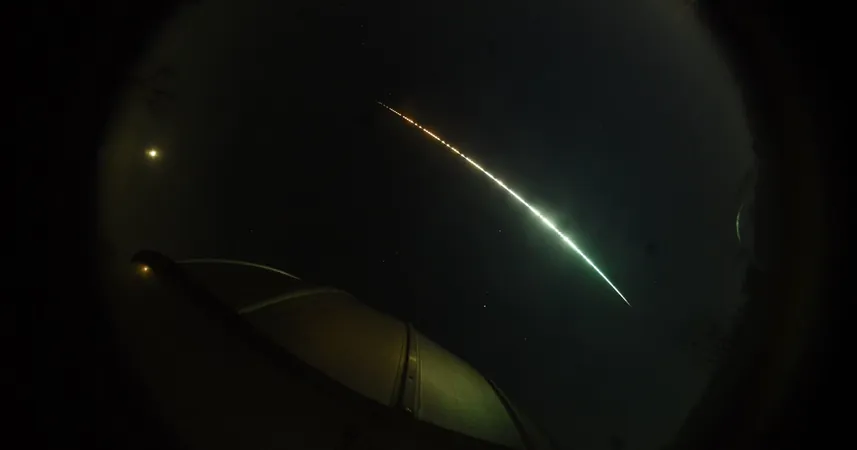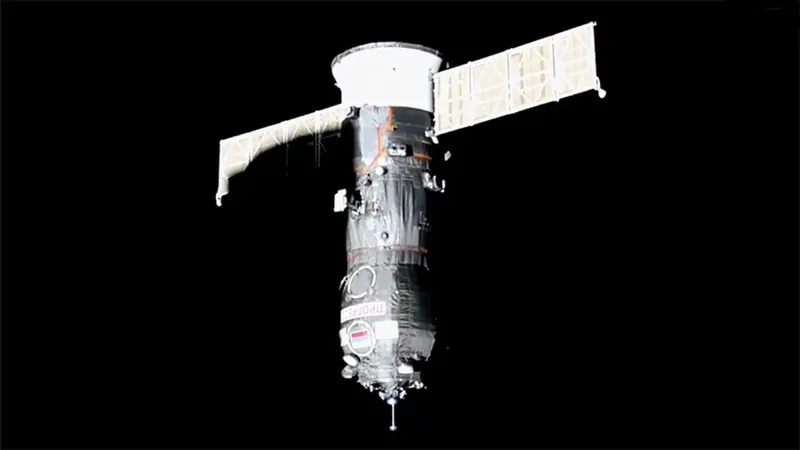
Scientists Unleash Game-Changing Methods to Study Near-Earth Asteroids—Is Earth Safe?
2024-11-26
Author: Siti
Introduction
On November 18th, 2022, an exciting event unfolded shortly before midnight when astronomers from the Catalina Sky Survey (CSS) in Arizona and other global observatories detected a small asteroid, now known as 2022 WJ1, hurtling towards Earth. This cosmic visitor would soon enter the atmosphere above Southern Ontario, creating quite a spectacle as it transformed into a brilliant fireball that scattered meteorite fragments across the Niagara region.
International Efforts and Methodology
This unexpected event didn't just delight skywatchers; it marked the beginning of an international effort to recover and analyze the fragments of WJ1. However, despite diligent searches, no pieces have yet been located. What makes this case particularly fascinating is a recent study led by Dr. Theodore Kareta from the Lowell Observatory, which outlined a revolutionary new methodology for studying near-Earth asteroids (NEAs), based primarily on the data gathered from 2022 WJ1. This study, published in *The Planetary Science Journal*, is pivotal as it characterizes the smallest asteroid known to date.
Research Collaboration
Dr. Kareta's team included researchers from prominent institutions, including the University of Western Ontario and NASA’s Jet Propulsion Laboratory. The newly developed approach demonstrated not only the composition of the NEA but also laid out a strategy that could be applied to other potential asteroid threats in the future.
The Significance of Detection
The significance of detecting WJ1 before it entered the atmosphere cannot be overstated. Astronomers had just enough time to observe and refine its trajectory, pinpointing its impact over the Great Lakes area—a fortunate alignment that allowed them to monitor the asteroid with precision using a network of meteor-observing cameras run by Western University.
Historic Observations
For the first time in history, observers were prepared to witness a natural fireball in real-time. Professor Paul Wiegert, a co-author of the study, expressed his excitement: "Though the conditions were cold and windy, the fireball was a sight to behold—easily visible through the broken clouds and glowing a vibrant orange-red."
Technological Contributions
The Lowell Discovery Telescope (LDT) played a crucial role in this observation, capable of rapid and stable tracking that was essential for keeping up with the swift-moving WJ1. Dr. Kareta noted the extraordinary circumstances surrounding this research endeavor, indicating that the asteroid’s flight path provided unique opportunities for scientific observation and analysis.
Observations and Findings
Observations made during WJ1's descent revealed that it had a diameter estimated between 40 to 60 cm (16 to 27 inches) and a silica-rich surface, categorizing it within the S-chondrite group—one of the oldest and most prevalent types of meteorites found on Earth. “This was only the sixth asteroid discovered prior to impacting our planet,” explained Denis Vida, highlighting how groundbreaking this achievement truly is.
Conclusion and Future Preparedness
Dr. Kareta emphasized the collaborative spirit that made this unprecedented analysis possible: “This is an extraordinary mix of good fortune and solid teamwork within the scientific community focused on planetary defense.” The successful comparison between telescopic and fireball camera data propels the field forward, enabling researchers to characterize future NEAs in unprecedented detail.
Despite ongoing efforts, fragments of WJ1 have yet to be recovered, with predictions suggesting they may have fallen into Lake Ontario. Nonetheless, local enthusiasts continue to scour the area, remaining hopeful that pieces of this historic asteroid will eventually surface. This ambitious research not only boosts our knowledge but also heightens awareness about the importance of asteroid tracking—prompting the question, how prepared really are we for future cosmic visitors?


 Brasil (PT)
Brasil (PT)
 Canada (EN)
Canada (EN)
 Chile (ES)
Chile (ES)
 España (ES)
España (ES)
 France (FR)
France (FR)
 Hong Kong (EN)
Hong Kong (EN)
 Italia (IT)
Italia (IT)
 日本 (JA)
日本 (JA)
 Magyarország (HU)
Magyarország (HU)
 Norge (NO)
Norge (NO)
 Polska (PL)
Polska (PL)
 Schweiz (DE)
Schweiz (DE)
 Singapore (EN)
Singapore (EN)
 Sverige (SV)
Sverige (SV)
 Suomi (FI)
Suomi (FI)
 Türkiye (TR)
Türkiye (TR)